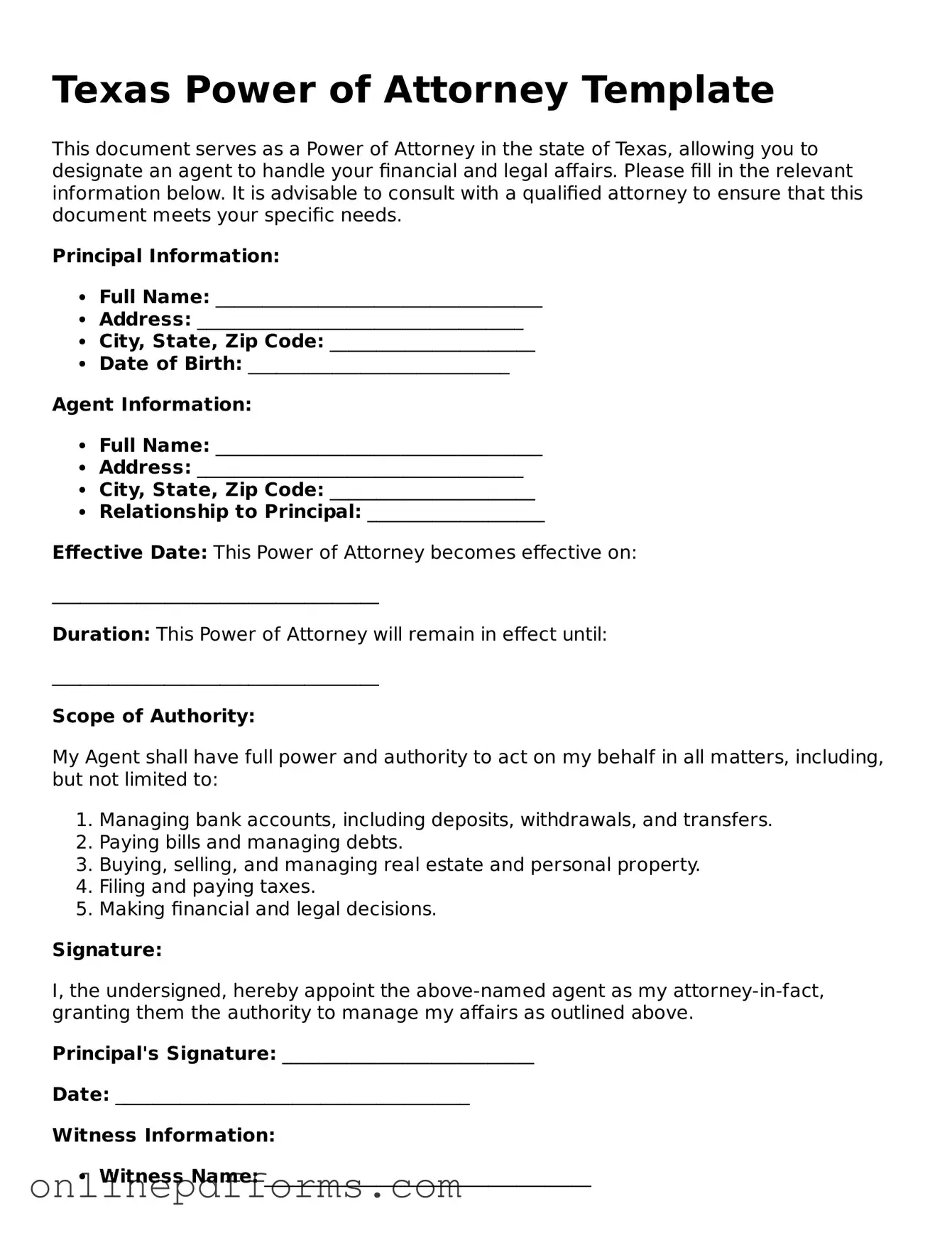The Texas Medical Power of Attorney is a document similar to the general Power of Attorney. It specifically allows an individual to designate someone to make medical decisions on their behalf if they become unable to do so. This document focuses solely on healthcare matters, giving the appointed agent authority to discuss treatment options, make decisions about surgeries, and manage end-of-life care. Like the general Power of Attorney, it requires the principal to be of sound mind when signing and can be revoked at any time as long as the principal is capable of making decisions.
The Durable Power of Attorney is another document that shares similarities with the Texas Power of Attorney. This type remains effective even if the principal becomes incapacitated. It allows the designated agent to continue managing the principal's financial and legal affairs without interruption. In contrast to a regular Power of Attorney, which may become void upon incapacitation, the durable version ensures that the agent can act on behalf of the principal during critical times when they can no longer make decisions for themselves.
The Springing Power of Attorney is also akin to the Texas Power of Attorney but with a specific condition. This document only takes effect when the principal becomes incapacitated. Unlike a general Power of Attorney that is effective immediately upon signing, the Springing Power of Attorney provides a safeguard, ensuring that the agent's authority is activated only when necessary. This can offer peace of mind to the principal, as they retain control over their affairs until they truly need assistance.
The Financial Power of Attorney focuses solely on financial matters, similar to the Texas Power of Attorney. This document allows an individual to appoint someone to manage their finances, including handling bank accounts, paying bills, and making investments. While the general Power of Attorney may cover a broader range of issues, the Financial Power of Attorney is specifically tailored for financial decisions. It can be either durable or non-durable, depending on the principal's preferences regarding its effectiveness during incapacitation.
The Living Will, while different in purpose, complements the Texas Power of Attorney. A Living Will outlines an individual's wishes regarding medical treatment in end-of-life situations. It specifies what types of medical interventions the individual does or does not want. Although it does not appoint an agent like the Power of Attorney, it works alongside a Medical Power of Attorney to ensure that the appointed agent understands the principal's wishes. Together, these documents provide a comprehensive approach to healthcare decision-making.
